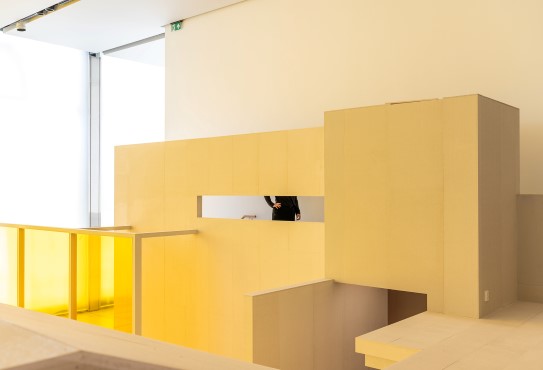Staged institutions IV

Transcription
Goro Tronsmo:
I’ve transformed the Light Hall into a kind of high-end down-town apartment. I’ve built a public space – an ‘outdoor’ public space – inside the Light Hall.
My name is Goro Tronsmo and I’m an artist. I work with large-scale, context-specific installations. When I was developing this work, I did a lot of thinking about how I could transform part of the Light Hall into a kind of temporary world. And then I began to develop the idea of building a kind of city, and I’ve tried to completely change how a museum can exist as a museum. I’ve tried to get away from the usual ideas about how we behave in museums. Because I don’t like the idea that once we’re inside a museum, we have to behave ourselves and keep our hands behind our backs and not touch, and the security guards come over and say “No – no touching!”
And so when I started working on this, I decided that I had to make the museum disappear. What I want is for you to come inside my installation and lie down on the bed.
And so you enter into a completely different world, a situation that’s completely different from anything you’ve experienced previously when you’ve gone to a museum or an exhibition. Where it’s not about ‘now I’m going to see something’, or ‘now I’m going to understand something’, but instead it’s suddenly about how you think and feel when you walk around inside it.
I thought about what Shakespeare said, “All the world’s a stage, and all the men and women merely players.” So I thought about what it’s like when I walk around inside an exhibition: am I a spectator, or am I playing the role of a spectator?
It’s exactly as though I get to switch between what’s the real world and the artist’s world. In a way, it’s about switching between fiction and reality. That’s kind of what I’ve done in here, I’ve built a museum within a museum. And then I go back outside the museum and the experience continues, even though I’m outside now. That’s what I’m after.